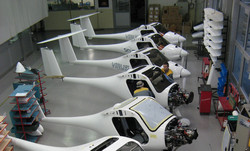Making supercomputing affordable for SMEs
The five-year FORTISSIMO project, enabling manufacturing SMEs to benefit from high-performance computing (HPC) simulations using the Cloud, is part of the EU’s digitising industry strategy, announced by Commissioner Günther Oettinger in 2015. FORTISSIMO is one of the flagship projects in the I4MS (ICT Innovation for Manufacturing SMEs) initiative and has already grown from involving initially 45 partners to 160, in 16 countries, today. The partners represent all stages of the value chain and include supercomputer centres, ICT vendors and SMEs keen to run their simulations. The project is designed to help companies access HPC software and infrastructure they could not otherwise afford and make their businesses more competitive as a result. ‘Literally hundreds of thousands of European SMEs could benefit from this initiative in future,’ said project coordinator, Professor Mark Parsons, of Edinburgh University’s EPCC supercomputing centre. ‘A key activity is to generate over 60 case studies showing how SMEs, running business-relevant applications on high-performance computers, can save many thousands of euros in design and manufacturing costs, improving their products and boosting their profit margins considerably.’ Supercomputers can cost millions of euros to purchase and maintain annually – and yet a small company may only run an exhaustive application on it once or twice a year, for which it would simply not be cost-effective to sustain in-house. FORTISSIMO shows that – whether the application comes from the automotive or aerospace, environmental or metal processing sector – a company using advanced simulations, at any of its network of supercomputer centres, stands to benefit substantially on the basis of a simple payment per use, rather than bearing the high costs of running its own dedicated infrastructure. FORTISSIMO, which began in July 2013 and whose second phase runs until the end of October 2018, is receiving a total of EUR 26 million in EU funding. It has already come up with many impressive results in several sectors, such as: - The Slovenian light aircraft maker, Pipistrel, estimated it was 10-times cheaper (saving EUR 270 000) to use a cloud-based HPC simulation provided by FORTISSIMO partner ARCTUR, than to buy its own powerful in-house system for occasional use. XLAB, also in Slovenia and who provided HPC expertise, benefited from this experiment too, gaining new strategic knowledge that taught it to extend its services and win new customers. - Another satisfied company was the Italian cable producer Prysmian. By using 3D simulations instead of its usual 2D capability, Prysmian was able to save EUR 100 000 in costs for each cable design, as well as to shorten time to market, save on materials and deliver better products. It is expected that this will boost its revenues in the range of several M€ in the coming 5 years. The HPC provider involved, the Italian supercomputer centre CINECA, improved its business model too, becoming more industry oriented as a result. - The Swedish sports car manufacturer Koenigsegg, working with FORTISSIMO partners ICON, NTUA and CINECA, improved the aerodynamics of its vehicles using computational fluid dynamic modeling only possible on a supercomputer. It saved 30 % in design costs, 60 % on prototypes and EUR 90 000 a year in overall development, all this after the pay-per-use HPC costs were taken into account. So, the potential impact of FORTISSIMO, once scaled up, is considerable. The second phase of the project is dedicated to creating a sustainable commercial ecosystem – an SME/HPC marketplace – which is being set up as a company so that it can thrive commercially and continue independently of EU funding. Hundreds of jobs could be created, not only among the SMEs winning new customers by saving on production costs, creating better and more competitive products and accelerating time to market, thereby increasing their revenues, but also in HPC centres and ICT vendors, expanding their business to new markets and demands for simulation and modelling, thereby opening new business models and opportunities for them too.
Keywords
FORTISSIMO, high performance computing, Pipistrel, SMEs, I4MS, Koenigsegg, HPC, CINECA, Prysmian







